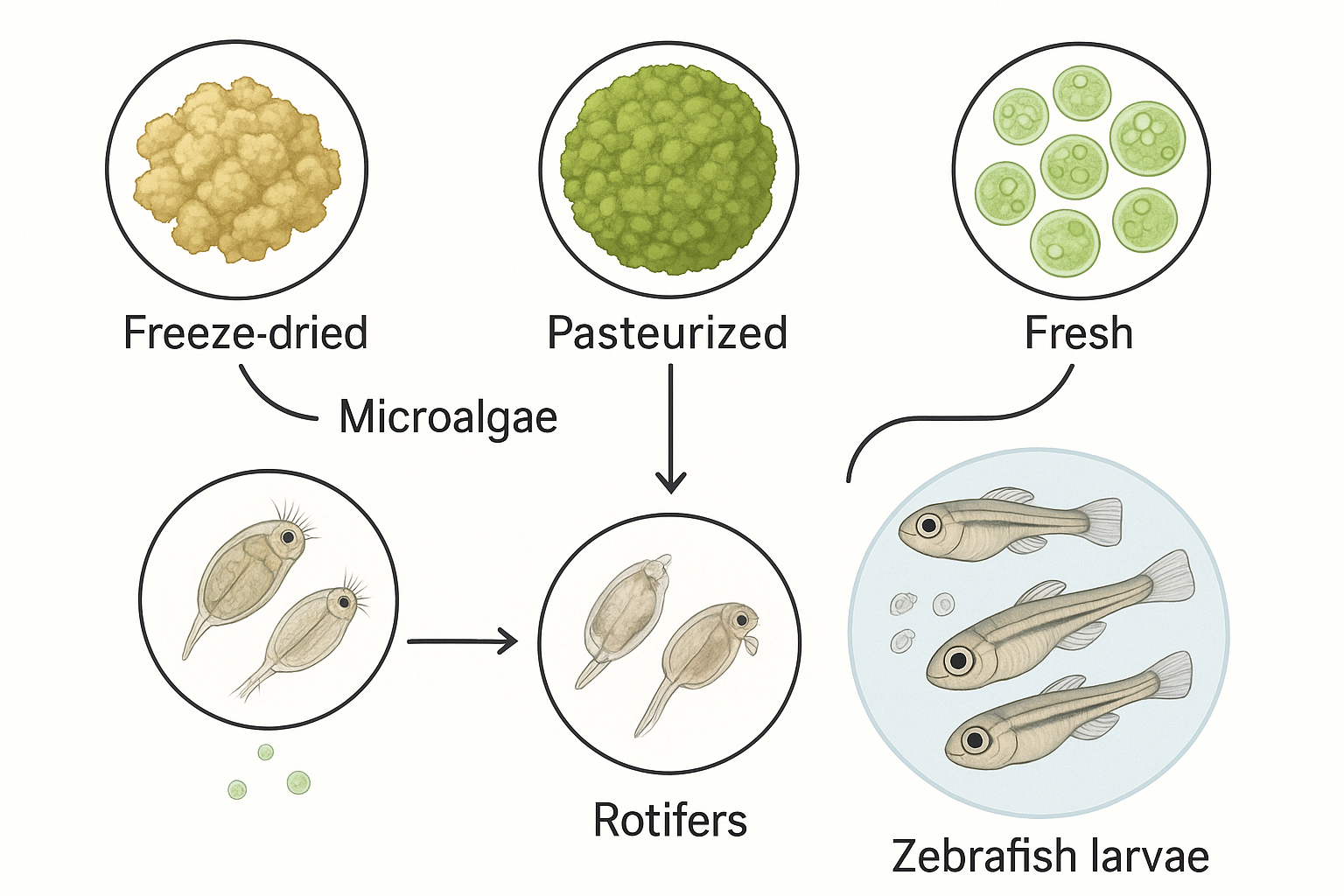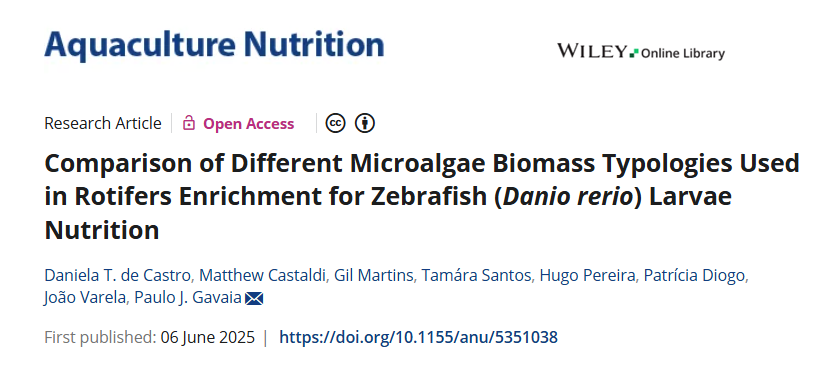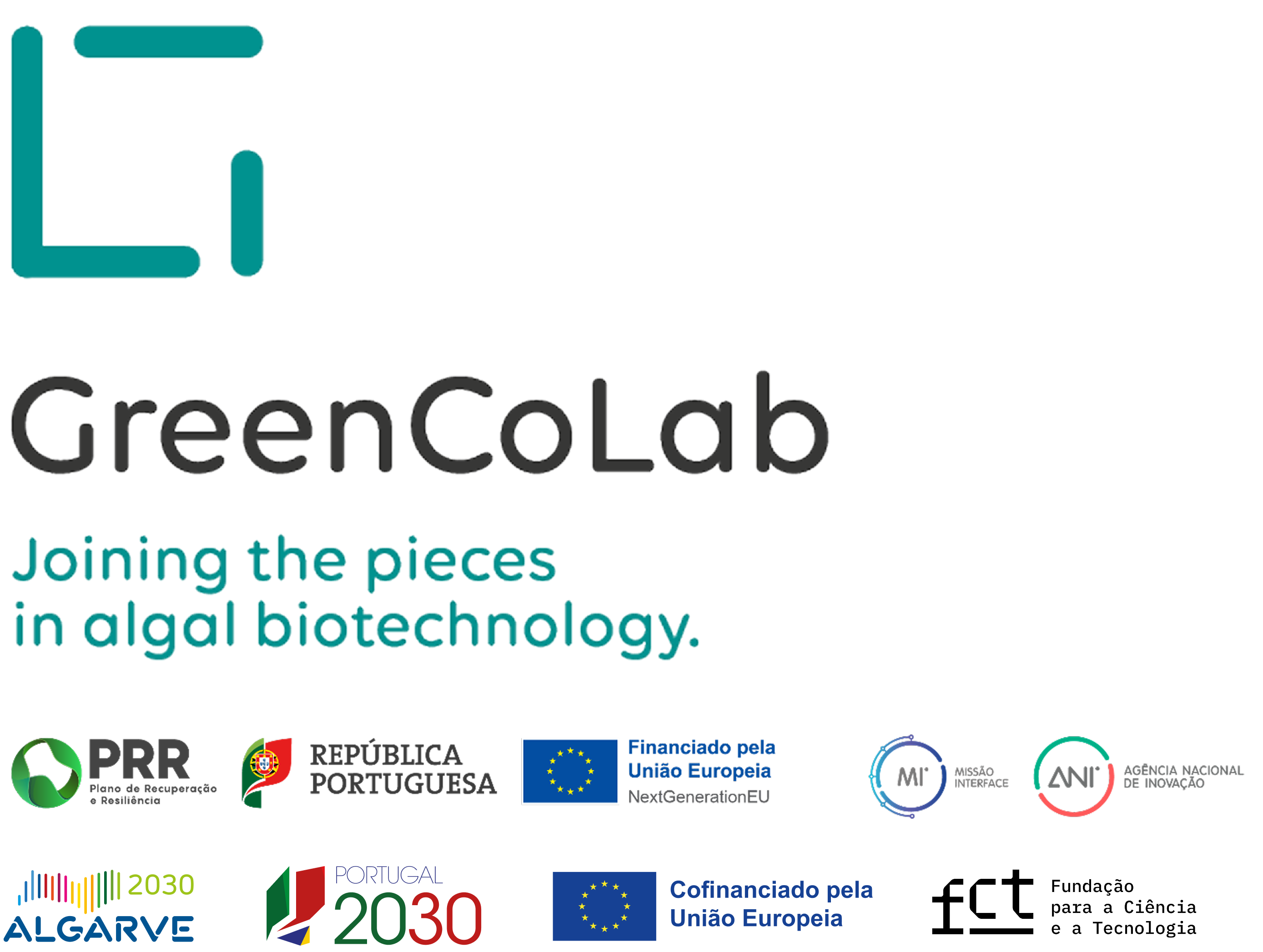

TITLE
Comparison of Different Microalgae Biomass Typologies Used in Rotifers Enrichment for Zebrafish (Danio rerio) Larvae Nutrition
JOURNAL
Aquaculture Nutrition
AUTHORS
Daniela T. de Castro, Matthew Castaldi, Gil Martins, Tamára Santos, Hugo Pereira, Patrícia Diogo, João Varela, Paulo J. Gavaia
ABSTRACT
The use of enriched rotifers with industrially produced microalgae represents a valuable tool for the enhancement of zebrafish larval nutrition and increased biological performance. Currently, a monoculture of microalgal species (Nannochloropsis sp.) in form of liquid paste is routinely used for rotifers enrichment for zebrafish larvae feeding; however, the most adequate typology (i.e., paste or freeze-dried) of the industrially produced microalgal biomass is still controversial. This work aimed to compare the effects of rotifers enriched with three different industrially produced microalgae species (i.e., Nannochloropsis oceanica, Tetraselmis chui, and Tisochrysis lutea) using paste and freeze-dried powder. Enriched rotifers were provided as feed during larval growth and the impact on growth and survival was evaluated. The use of enriched rotifers with both paste or freeze-dried microalgae improved growth compared to larvae fed exclusively with commercial microdiet. Larvae fed rotifers enriched with N. oceanica and T. chui attained higher weight and length both at 15 and 30 days postfertilization (dpf), while the use of microalgae in paste contributed to greater larvae lengths when compared to freeze-dried. The experimental results in this study revealed that N. oceanica and T. chui in paste are the most suitable microalgae forms to be used in zebrafish larvae nutrition and in the improvement of enrichment methodologies for rotifers.



